Football high school halls of fame stand as enduring tributes to athletic excellence, preserving the legacies of exceptional players, coaches, teams, and contributors who have defined programs and inspired generations. These recognition programs celebrate more than just statistics and championships—they honor the dedication, character, and impact that transform high school football from mere competition into cultural institutions that unite communities and shape young lives.
Whether your school is establishing a new football hall of fame, modernizing an existing recognition program, or seeking to expand limited physical displays, this comprehensive guide provides practical frameworks for creating meaningful recognition that honors past excellence while inspiring continued achievement. From induction criteria development through ceremony planning to modern digital display implementation, understanding hall of fame best practices enables schools to build sustainable programs celebrating football tradition effectively.
Understanding Football High School Halls of Fame
Football halls of fame at the high school level serve multiple strategic purposes that extend well beyond simple athlete recognition. Understanding these broader objectives helps schools design programs that deliver maximum value for their unique communities and program cultures.
The Purpose and Value of Football Hall of Fame Programs
Effective halls of fame accomplish several interconnected goals simultaneously:
Legacy Preservation: Football programs accumulate rich histories across decades and generations. Without systematic recognition, achievements fade from institutional memory as years pass. Halls of fame preserve these legacies permanently, ensuring that extraordinary accomplishments receive lasting acknowledgment regardless of how long ago they occurred. This preservation creates continuity connecting today’s teams with the foundational generations who established program traditions and standards.
Motivation and Inspiration: Visible recognition of past excellence motivates current athletes by demonstrating exactly what achievement looks like within their specific program. When players see the names and accomplishments of legendary predecessors displayed prominently, they gain concrete goals to pursue and understand that exceptional performance earns lasting recognition. This aspirational effect proves particularly powerful for programs with strong traditions—each generation feels responsibility to maintain standards set by those who came before.
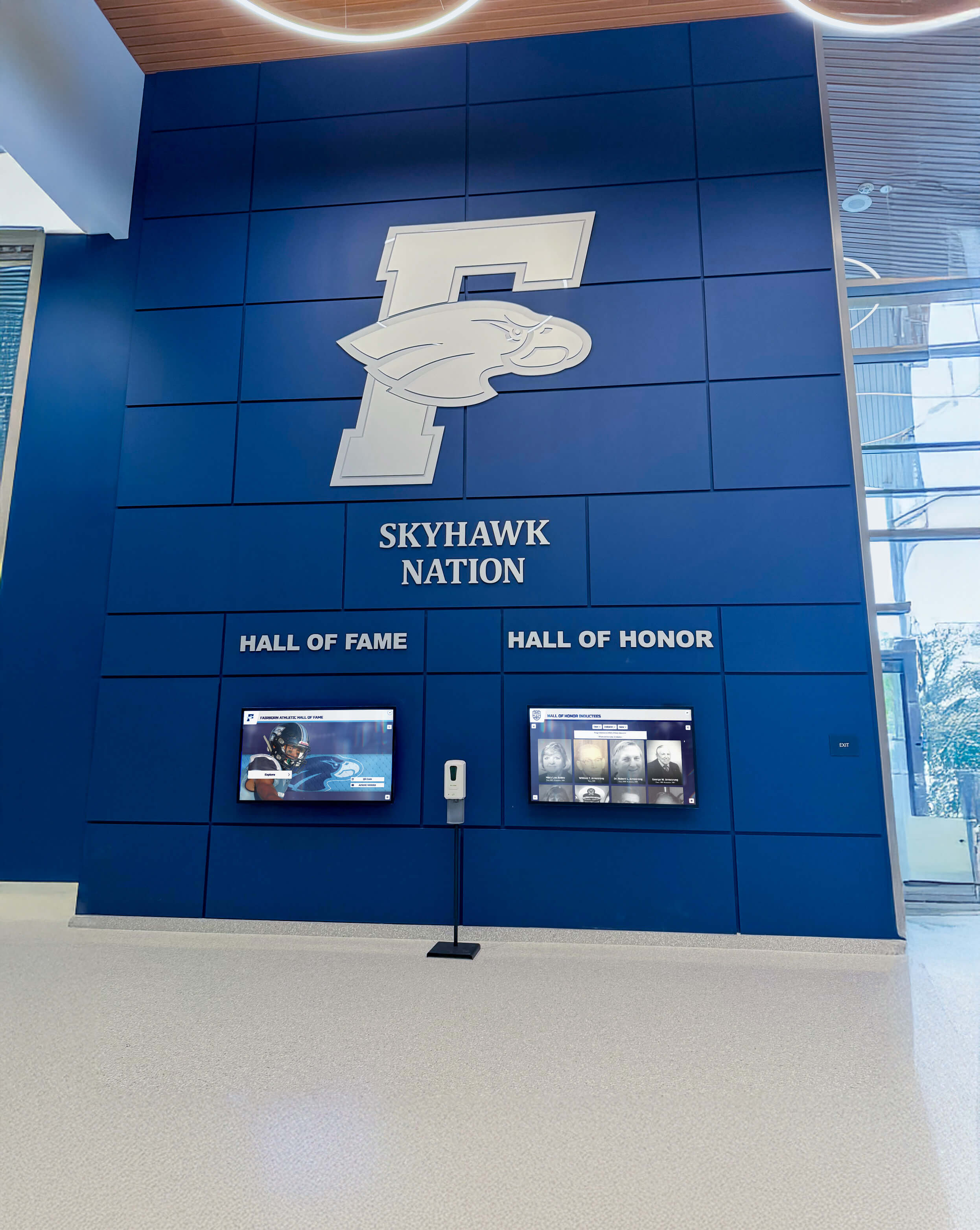
Community Identity: In many communities, particularly smaller towns and cities where high school sports dominate cultural life, football halls of fame become sources of collective pride that strengthen social bonds. Recognition displays celebrate shared history and create gathering points where generations connect over memories of legendary teams and players. This community-building function extends the hall of fame’s impact far beyond current students and athletes.
Alumni Engagement: Halls of fame provide powerful tools for maintaining connections with former players and supporters. Alumni who see their achievements honored feel valued and remain more connected to their schools and programs. This sustained engagement often translates into increased financial support, volunteer involvement, mentorship of current athletes, and attendance at games and events. The recognition investment returns value through strengthened alumni relationships spanning decades.
Recruitment Advantages: Prospective athletes and their families evaluate programs partially based on how schools honor their players. Comprehensive halls of fame demonstrate that programs value their athletes appropriately and maintain traditions of excellence. During facility tours, recognition displays become focal points showcasing program quality, tradition depth, and development capabilities that influence recruitment decisions in competitive environments.
Types of Football Hall of Fame Recognition
Schools implement various recognition models, each with distinct advantages and appropriate applications:
Individual Player Halls of Fame: The most common approach, these programs honor exceptional individual athletes who achieved remarkable statistical performance, received significant honors (all-state, all-conference, player of year), demonstrated outstanding character and leadership, or went on to successful college or professional careers. Individual recognition celebrates personal excellence while providing specific role models for current athletes to emulate.
Team Halls of Fame: Some schools emphasize collective achievement by primarily recognizing exceptional team seasons—particularly undefeated seasons, conference championships, state championship teams, or teams that achieved historic milestones. This team-focused approach reinforces football’s ultimate nature as a collaborative sport requiring coordinated excellence from every position. Many programs combine both individual and team recognition within comprehensive halls of fame.
Coach and Contributor Halls of Fame: Programs with deep traditions often expand recognition beyond players to honor coaches who built program excellence, athletic directors who supported development, boosters who provided critical resources, officials who ensured fair competition, trainers and support staff who kept players healthy, and community members who contributed to program success. Inclusive recognition acknowledges that championship programs require contributions from diverse constituencies working together toward shared goals.
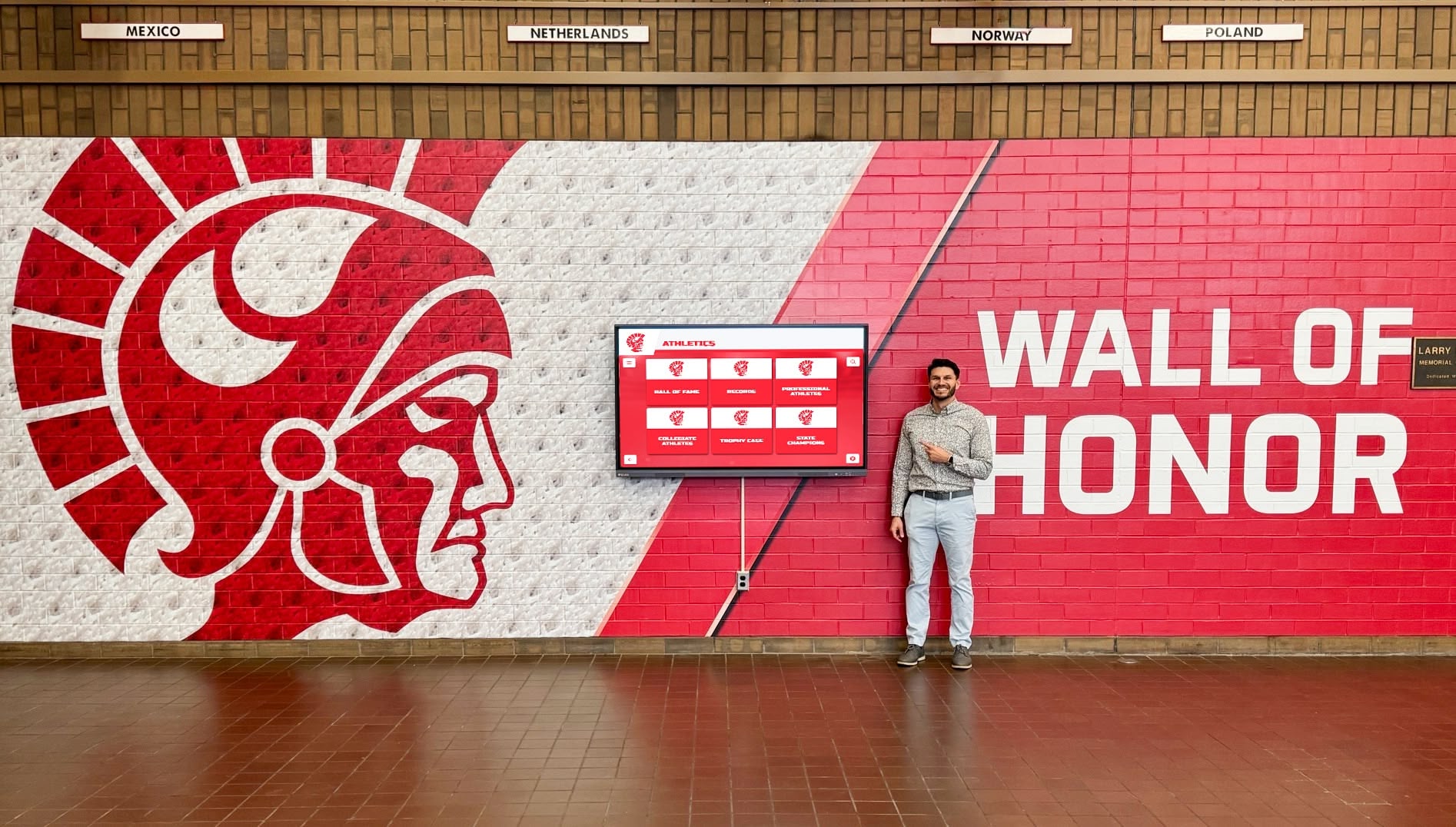
Multi-Sport Athletic Halls of Fame: Some schools maintain comprehensive athletic halls of fame recognizing excellence across all sports rather than football-specific programs. This integrated approach demonstrates institutional commitment to all athletes while creating opportunities for more efficient resource use. Football typically receives proportional representation within multi-sport halls of fame based on participant numbers and program prominence.
The optimal model depends on program history, available resources, community preferences, and recognition objectives. Many schools begin with focused approaches (individual players only) and expand over time as programs mature and resources grow.
Establishing Hall of Fame Induction Criteria
Clear, objective induction criteria prevent the politics, favoritism, and inconsistency that undermine hall of fame credibility. Well-designed criteria ensure that selection focuses on merit and achievement rather than relationships or popularity while remaining flexible enough to recognize diverse excellence forms.
Essential Elements of Effective Criteria
Waiting Period Requirements: Most programs establish minimum waiting periods between graduation and hall of fame eligibility. Common approaches include 10-year minimum (allows evaluation of complete college and early professional careers), 15-year standard (balances recency with historical perspective), or 5-year minimum for exceptional cases (recognizes truly extraordinary achievements). Waiting periods provide emotional distance enabling more objective evaluation while ensuring selections stand the test of time.
Objective Performance Standards: Quantifiable criteria reduce subjectivity and provide clear targets. For individual players, these might include:
Statistical Thresholds:
- Career rushing yards or touchdowns
- Passing yards or completion percentage
- Receiving yards or receptions
- Tackles, sacks, or interceptions
- Scoring records or consecutive starts
- Position-specific statistical leadership
Honor-Based Criteria:
- All-state first team selections
- All-conference recognition
- State or regional player of year awards
- Academic all-state designation
- College scholarship recipients
- Professional playing experience
Establishing specific numerical thresholds (e.g., “1,000+ career rushing yards” or “First-team all-state selection”) creates transparency and helps potential inductees understand exactly what achievement level earns recognition.
Character and Leadership Considerations: Statistics alone miss important achievement dimensions. Criteria should acknowledge leadership roles (team captain, mentorship of younger players), sportsmanship and character demonstration, positive community impact, academic excellence alongside athletic achievement, and overcoming adversity or obstacles. These qualitative factors prevent halls of fame from becoming purely statistical exercises while honoring complete student-athlete development.
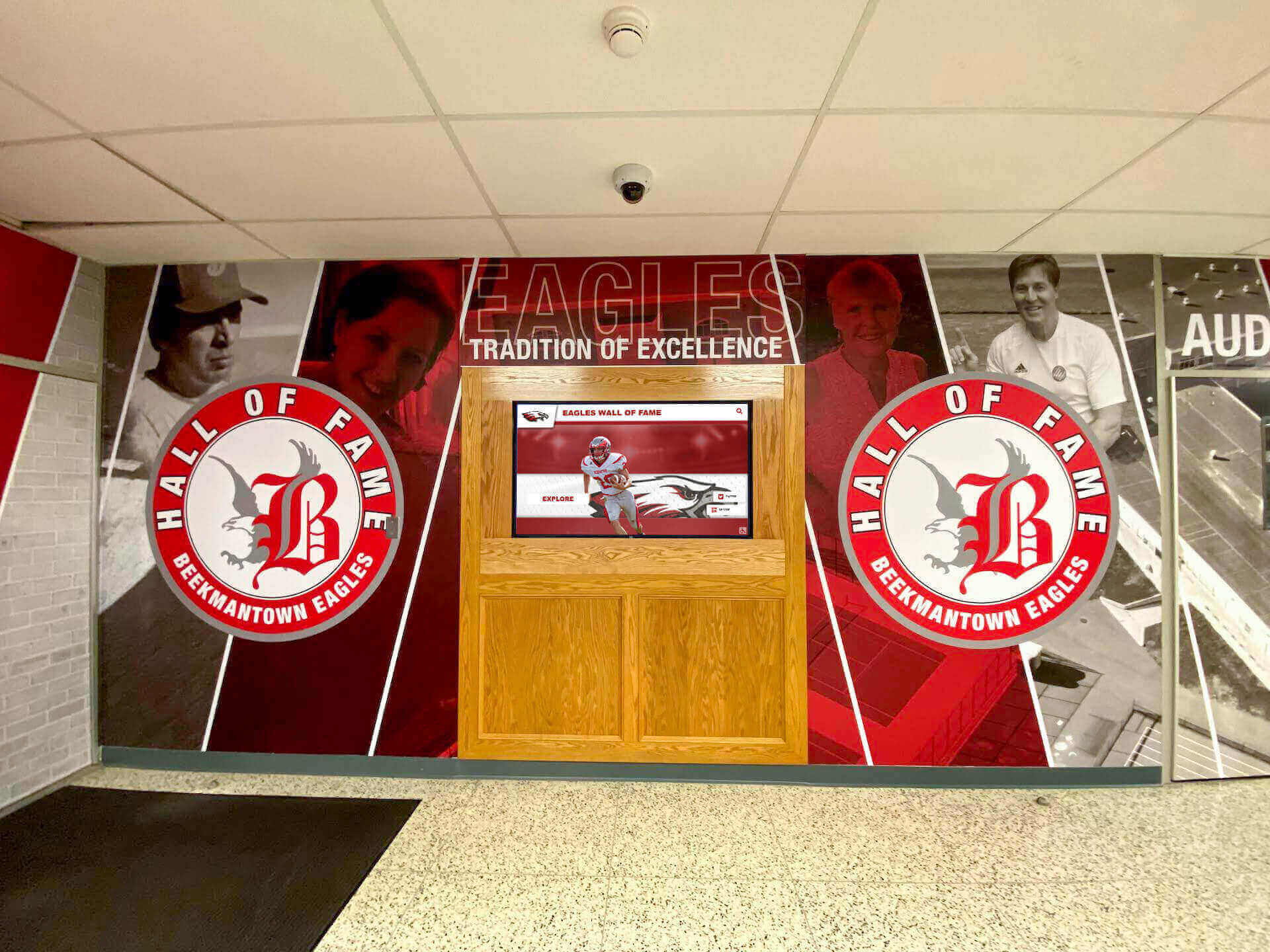
Team Achievement Recognition: For team inductions, criteria might include state championships, undefeated seasons, conference championship winning streaks, or teams that set significant program records. Clear standards prevent every successful season from receiving induction while ensuring truly exceptional team achievements gain appropriate recognition.
The Selection Process
Transparent selection processes build credibility and community trust in hall of fame programs. Effective approaches typically include:
Selection Committee Composition: Committees should represent diverse program constituencies—former players from different eras, current and former coaches, athletic administrators, school board or administrative representatives, booster club leadership, community members with program knowledge, and occasionally student representatives providing youth perspective. Diversity ensures balanced evaluation from multiple viewpoints while preventing any single constituency from dominating selections.
Nomination Procedures: Clear nomination processes ensure all qualified candidates receive consideration. Open nomination periods allowing community members to submit candidates, self-nomination options (some exceptional athletes lack advocates), required nomination forms documenting qualifications and achievements, supporting materials like statistics, news coverage, and letters of recommendation, and annual nomination windows with specific deadlines create systematic approaches preventing arbitrary or inconsistent candidate consideration.
Evaluation and Selection: Once nominations close, committees should follow structured processes: preliminary review ensuring nominees meet minimum criteria, detailed evaluation of qualified candidates using scoring rubrics aligned with criteria, deliberation and discussion of finalist candidates, voting procedures (simple majority, supermajority, consensus models) determining inductees, and specified inductee numbers per year (maintaining selectivity while recognizing deserving candidates). Documentation of decisions, particularly for future reference regarding close calls or waiting list candidates, supports program continuity across changing committee membership.
Programs implementing digital recognition systems like those from Rocket Alumni Solutions often find nomination and evaluation easier through online submission portals and collaborative review tools that streamline committee work while maintaining process integrity.
Planning Meaningful Induction Ceremonies
Induction ceremonies transform hall of fame selection from administrative processes into memorable celebrations honoring achievements while strengthening program culture and community connections. Thoughtful ceremony planning ensures events appropriately recognize inductees while creating meaningful experiences for athletes, families, and communities.
Ceremony Format and Timing
Event Scheduling Considerations: Timing significantly impacts attendance and atmosphere. Common approaches include homecoming weekend integration (leveraging already-high attendance and alumni presence), dedicated annual hall of fame banquets (creating signature events), halftime recognition during regular season games (reaching largest possible audiences), or special events during championship seasons or reunions (tying recognition to other major occasions). Consider factors like inductee availability, facility capacity, conflicting community events, and whether the ceremony honors individual athletes or team-focused inductions when selecting optimal timing.
Ceremony Structure: Effective ceremonies typically follow similar frameworks ensuring appropriate recognition depth while maintaining reasonable length:
Pre-Ceremony Social Time (30-45 minutes):
- Registration and welcome
- Reception with appetizers and refreshments
- Display of inductee photos and accomplishments
- Opportunity for attendees to reconnect
- Sale of commemorative items or fundraising
Formal Ceremony (60-90 minutes):
- Welcome and opening remarks by athletic director or principal
- Introduction of selection committee and dignitaries
- Recognition of previous inductees in attendance
- Individual inductee presentations (7-10 minutes each)
- Presentation of plaques, rings, or commemorative items
- Inductee acceptance speeches (3-5 minutes)
- Closing remarks and adjournment
Post-Ceremony Celebration (30-60 minutes):
- Photo opportunities for inductees and families
- Social time for congratulations and reconnection
- Optional reception continuing celebration
- Media interviews for news coverage
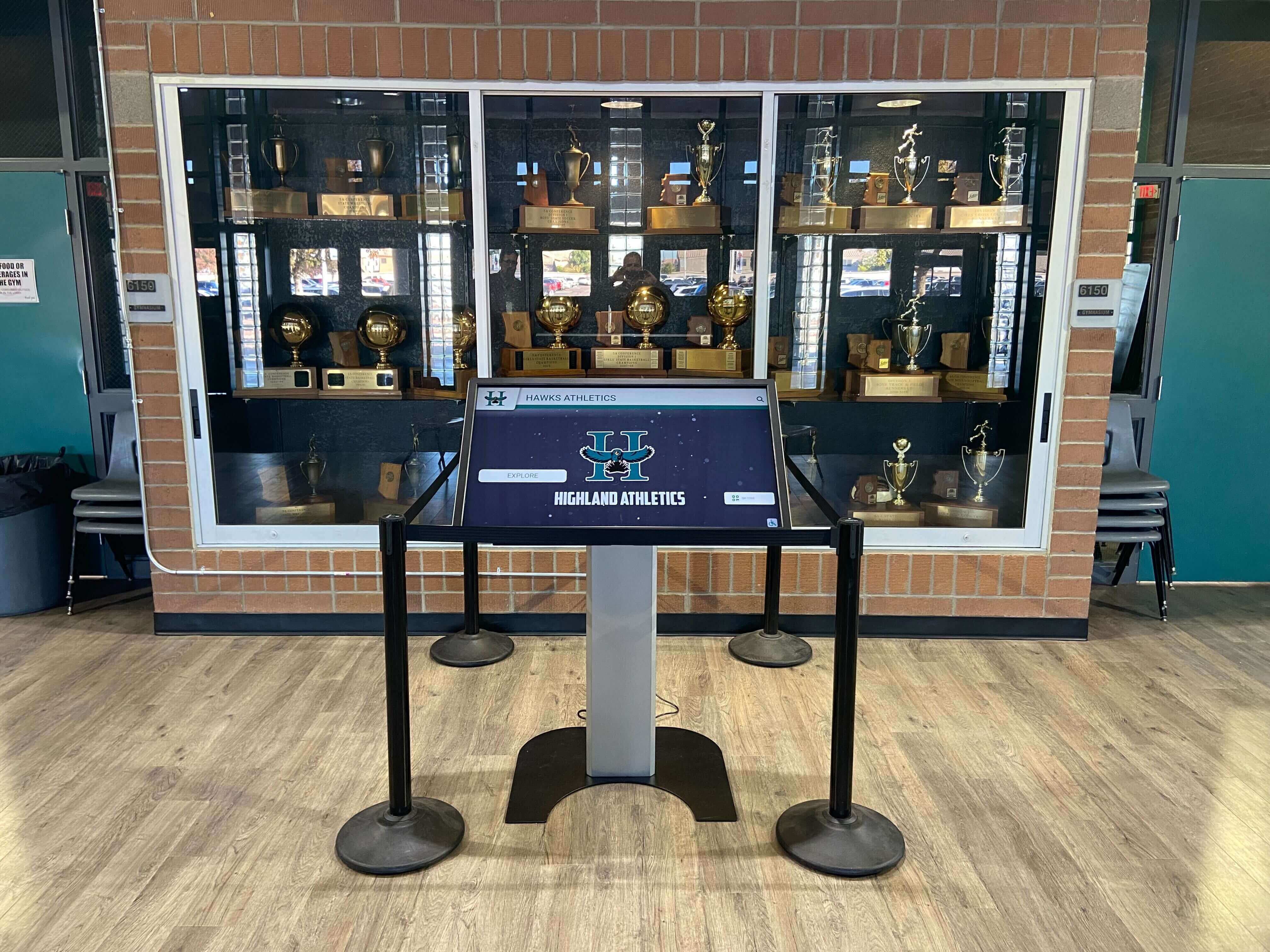
Creating Memorable Inductee Presentations
The presentation of each inductee represents the ceremony’s heart. Compelling presentations honor achievements while entertaining audiences and creating lasting memories.
Video Tributes: Well-produced video presentations lasting 3-5 minutes effectively tell inductee stories through game footage showing athletic performance and memorable plays, interview clips with coaches, teammates, and family members, photos documenting career progression, statistical graphics highlighting achievements, and testimonials from community members. Quality video production requires advance planning, content gathering, and professional editing but delivers powerful emotional impact impossible through spoken presentations alone. Schools creating engaging video content for digital hall of fame displays often repurpose footage for induction ceremonies, maximizing content development investment.
Live Presentations: Presenters—typically former coaches, teammates, or family members with personal connections—should receive clear guidance on presentation structure and length. Effective presentations include biographical background and career overview, specific memorable moments and achievements, character traits and leadership examples, impact on teammates and program, post-football success and life achievements, and personal anecdotes revealing personality and values. Written talking points ensure presentations remain focused while maintaining personal authenticity.
Physical Recognition Items: Tangible items commemorating induction hold lasting value for inductees and families. Common recognition elements include framed certificates with official induction documentation, commemorative plaques for home display, hall of fame rings or medallions (for higher-budget programs), embroidered jackets or apparel items, and personalized gifts reflecting inductee interests or careers. These physical items represent permanent reminders of recognition received.
Maximizing Community Engagement
Ceremonies deliver greatest value when they engage broad audiences rather than intimate gatherings of inductees and immediate families.
Promotion and Attendance Building: Generate awareness and excitement through advance publicity announcing inductees and event details, social media campaigns highlighting inductee achievements and building anticipation, local media coverage in newspapers and broadcast outlets, direct invitation to relevant constituencies (alumni, former players, community members), and school-wide promotion ensuring current students understand significance. Strong promotion typically produces attendance of 200-500+ people for well-established programs, creating atmosphere worthy of the recognition being bestowed.
Streaming and Recording: Not all interested parties can attend in person. Extending ceremony reach through live streaming for distant alumni and family members, professional recording for archival purposes and future viewing, social media highlights and clips for those following remotely, and integration with digital hall of fame displays ensuring preservation creates inclusive access beyond physical attendance. Modern technology makes high-quality streaming affordable for most schools.
Fundraising Integration: While recognition should never feel transactional, ceremonies provide natural fundraising opportunities through ticket or table sales covering event costs, program advertisements from businesses and supporters, silent auctions or raffles of sports memorabilia, donation appeals integrated tastefully into programs, and major gift recognition for event sponsors. Revenue generated often offsets ceremony costs while supporting ongoing hall of fame program operations.
Traditional vs. Digital Hall of Fame Displays
The physical recognition of hall of fame inductees traditionally relied on plaques, trophy cases, and wall-mounted displays. While these conventional approaches carry nostalgic appeal and physical presence, modern digital solutions address every limitation of traditional displays while introducing capabilities impossible with physical recognition.
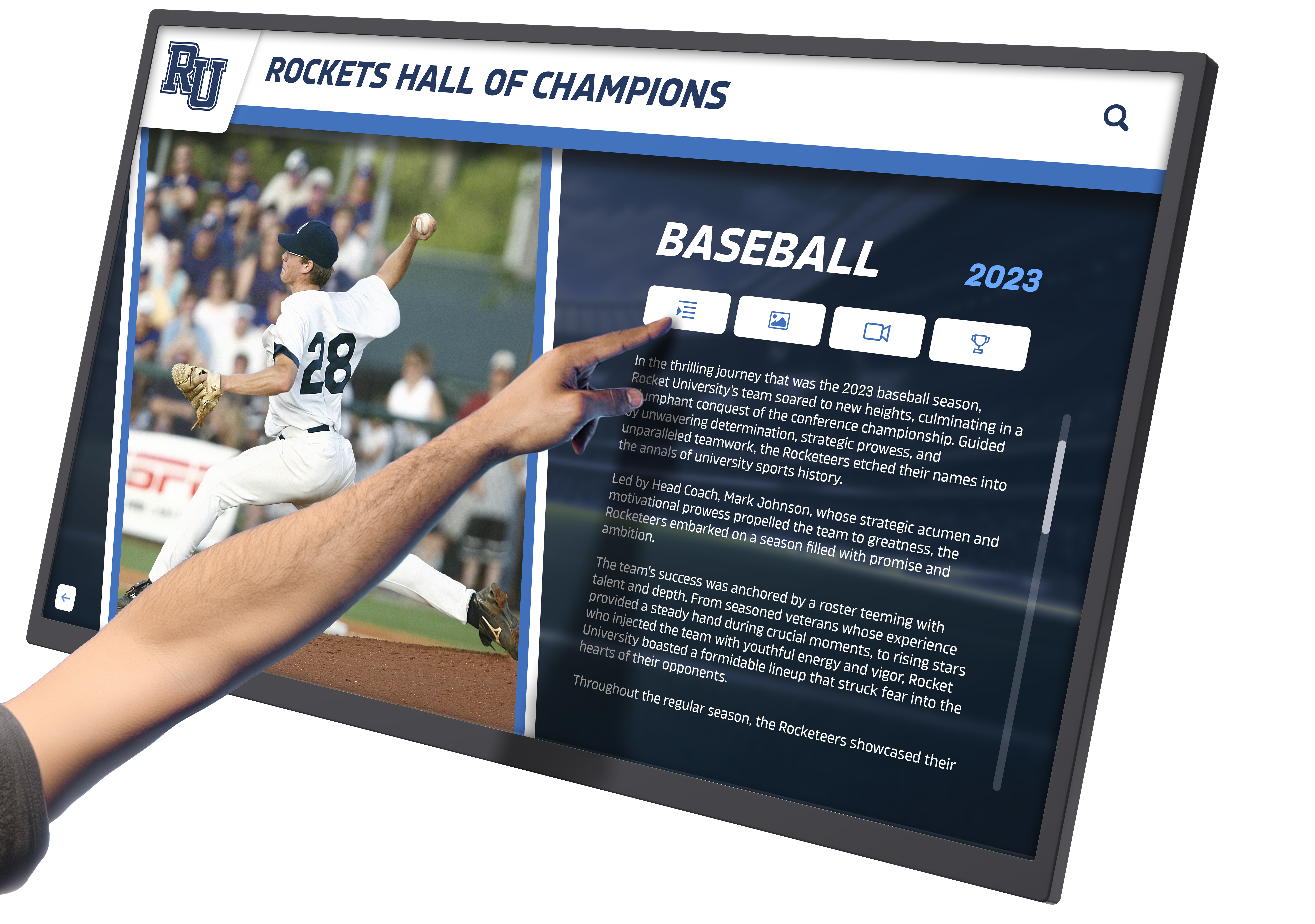
Limitations of Traditional Physical Displays
Space Constraints: Physical displays face finite capacity determined by available wall space, trophy case dimensions, and hallway length. Schools with multi-decade programs inevitably confront difficult decisions about which inductees receive prominent display versus relegation to secondary locations or storage. This scarcity forces prioritization that can feel disrespectful to earlier inductees whose plaques get removed to accommodate recent selections.
Static Information: Traditional plaques typically contain only names, years, and brief achievement summaries—perhaps 50-100 words maximum. This limited information fails to tell complete stories about what made inductees exceptional, the context of their achievements, or their impact beyond statistics. Visitors see names but rarely understand the remarkable accomplishments and character those names represent.
Maintenance Challenges: Physical displays require ongoing maintenance—plaques tarnish and accumulate dust, photos fade from light exposure and age, trophy cases develop physical wear and damage, mounting hardware loosens or fails, and updating displays requires professional services for engraving and installation. These maintenance demands create ongoing costs while often resulting in outdated or deteriorating displays that fail to honor inductees appropriately.
Limited Accessibility: Physical displays exist only in their mounted locations. Alumni living elsewhere cannot view recognition unless they visit campus. Current students in different building areas may rarely encounter displays. This geographic limitation dramatically restricts how many people engage with hall of fame recognition regularly.
Advantages of Digital Recognition Solutions
Modern digital displays eliminate traditional limitations while creating entirely new recognition possibilities. Schools implementing systems like interactive touchscreen hall of fame displays consistently report dramatically higher engagement and broader impact compared to conventional recognition approaches.
Unlimited Recognition Capacity: Digital platforms store unlimited inductees without space constraints. Schools can recognize every deserving candidate across program history rather than making difficult exclusion decisions based on physical space availability. This unlimited capacity ensures comprehensive recognition honoring all excellence rather than only recent or most prominent achievements.
Rich Multimedia Storytelling: Digital displays integrate multiple content types impossible with traditional plaques:
- High-resolution photographs showing inductees during playing careers and currently
- Video highlights of memorable plays, championship moments, and career achievements
- Audio recordings of inductee reflections, coach testimonials, and acceptance speeches
- Extended biographical content providing comprehensive career narratives
- Statistical databases presenting complete performance records across seasons
- News coverage from local media documenting achievements as they occurred
- Team context connecting individual achievements to program history
This multimedia richness transforms simple name recognition into compelling stories that engage viewers emotionally and intellectually, creating deeper appreciation for what inductees accomplished.
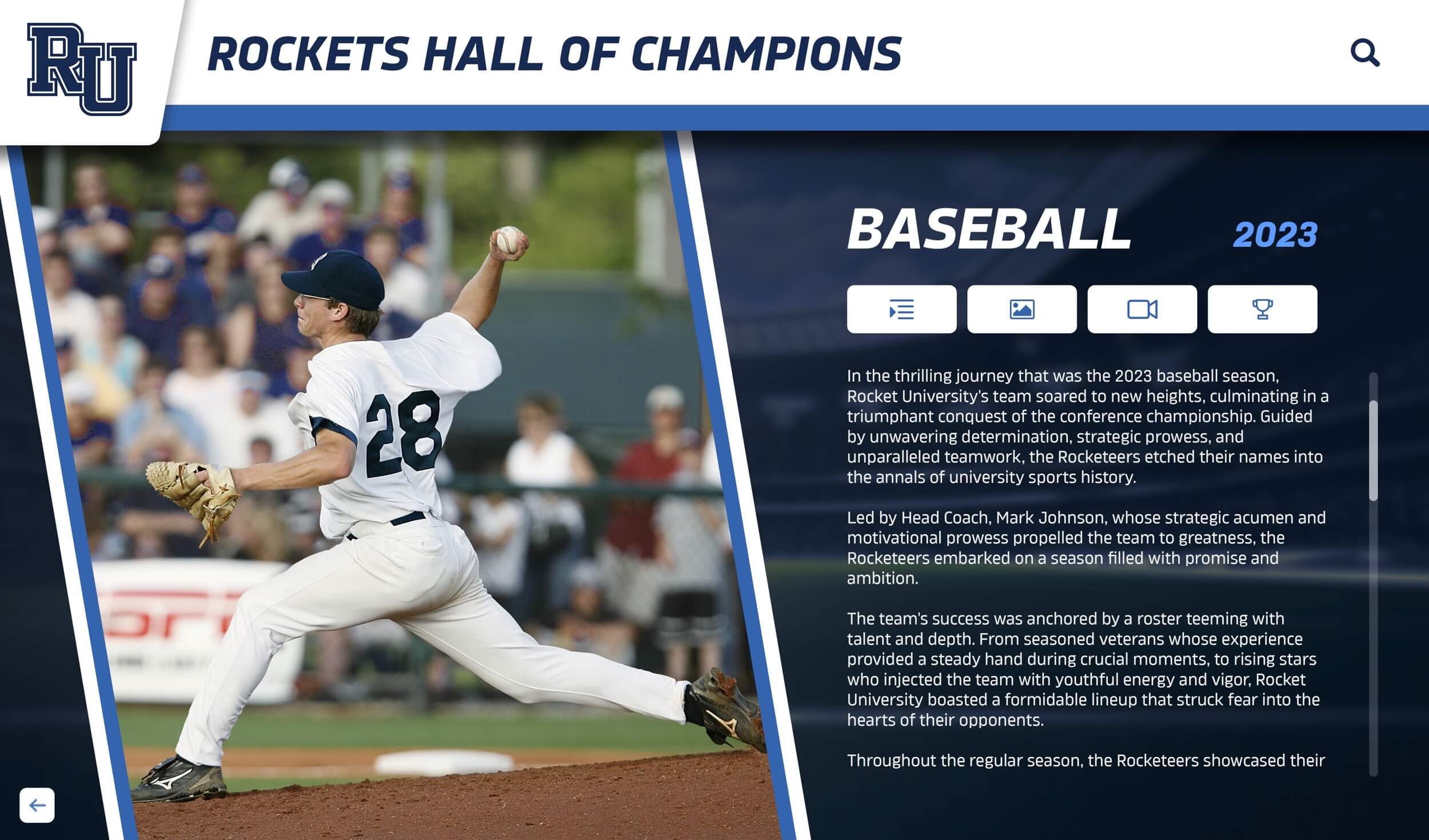
Interactive Search and Exploration: Digital systems enable visitors to actively engage rather than passively viewing static displays. Interactive features include name-based search instantly locating specific inductees, year-based filtering showing all inductees from particular decades or graduating classes, position-specific browsing displaying only quarterbacks, linemen, or defensive players, achievement-type filtering highlighting all state champions, scholarship recipients, or record holders, and related inductee connections suggesting teammates, rivals, or players from similar eras. This personalized exploration dramatically increases engagement time—typical digital display sessions average 5-8 minutes versus 30-60 seconds for traditional plaque viewing.
Instant Updates and Corrections: Cloud-based content management enables immediate updates from anywhere with internet access. Adding new inductees requires minutes of data entry rather than weeks waiting for plaque production and installation. Correcting errors, updating alumni accomplishments, or enhancing existing profiles happens instantly. This real-time capability ensures displays remain perpetually current and accurate.
Online Accessibility: Digital content isn’t limited to physical display locations. The same recognition appears on school websites, enabling alumni worldwide to explore hall of fame inductees from anywhere. Mobile-optimized interfaces work seamlessly on smartphones and tablets. Social sharing features allow inductees and families to distribute recognition through their networks, exponentially extending reach beyond physical campus locations.
Analytics and Engagement Tracking: Digital platforms provide detailed analytics revealing which inductees generate most interest, what content types receive longest engagement, when visitors use displays most frequently, what search terms indicate audience interests, and how recognition usage patterns change over time. This data informs content development priorities and demonstrates recognition program value quantitatively.
Programs can learn more about transitioning from traditional to digital approaches through resources on modernizing recognition walls that preserve tradition while embracing technology’s advantages.
Implementing Digital Football Hall of Fame Programs
Schools ready to establish or modernize football halls of fame through digital technology should follow systematic implementation approaches ensuring successful outcomes aligned with objectives and resources.
Planning and Needs Assessment
Defining Program Scope: Clear scope definition prevents misaligned expectations and ensures implementations address actual priorities. Key questions include: Will the hall of fame focus exclusively on football or integrate with multi-sport recognition? How far back will initial recognition extend—complete program history or recent decades with historical expansion later? Which achievement types deserve recognition—players only, or also coaches, teams, and contributors? What content depth should profiles include—basic information or comprehensive multimedia? How will the program integrate with existing recognition and traditions?
Content Inventory and Gap Analysis: Assess what materials currently exist versus what you’ll need: existing trophies, plaques, and awards; historical photos from yearbooks, newspapers, and archives; statistical records and performance data; video footage of games and highlights; biographical information about inductees; and documentation of achievements, honors, and post-graduation accomplishments. Identifying content gaps early enables targeted research and development before launch rather than discovering missing information mid-implementation.
Budget Development: Complete digital hall of fame implementations typically require $15,000-$40,000 in initial investment, varying based on display size, content scope, and customization level. Budget components include:
Hardware Costs ($8,000-$22,000):
- Commercial-grade touchscreen display (43"-75")
- Industrial computing module
- Professional mounting (wall or kiosk)
- Network connectivity infrastructure
- Installation labor
Software and Content ($7,000-$18,000):
- Content management platform licensing
- Interactive display software
- Initial content development
- Historical research and digitization
- Professional photography and video
- Design and customization
Annual Operating Costs ($2,500-$5,000): Software licensing and support, ongoing content additions and updates, periodic content enhancement, and hardware warranty extensions. Many programs fund implementations through booster club campaigns, alumni association support, memorial giving opportunities, corporate sponsorships, capital campaign integration, or general athletic budget allocations.

Vendor Selection and Platform Evaluation
Critical Platform Capabilities: When evaluating digital hall of fame vendors, prioritize intuitive content management requiring no coding expertise, flexible categorization supporting diverse content types, robust search and filtering for visitor use, multimedia integration (photos, videos, PDFs, audio), mobile and web accessibility extending beyond physical displays, role-based permissions supporting multiple administrators, automatic backups preventing data loss, analytics tracking engagement and usage, responsive design working across all screen sizes, and dedicated support ensuring long-term success.
Reference Checking: Request contacts from schools with similar programs, program sizes, and recognition needs. Ask specifically about content management ease, vendor responsiveness and support quality, implementation timeline and process, ongoing operational requirements, unexpected challenges encountered, inductee and community reception, and whether they’d select the same vendor again. Direct conversations with peer schools provide invaluable implementation insights that vendor marketing materials cannot.
Solutions like Rocket Alumni Solutions specifically serve educational institutions and athletic programs, offering capabilities purpose-built for school recognition needs rather than generic digital signage platforms requiring extensive customization.
Content Development Strategies
Phased Implementation Approach: Rather than delaying launch until complete historical archives exist, implement in phases delivering immediate value while building toward comprehensive recognition:
Phase 1 - Foundation (Months 1-3): Recent 10-15 years with accessible information and living inductees, all officially inducted hall of fame members, basic profiles with photos and key achievements, current coaching staff and program leadership, and championship teams from recent decades. Launch with substantial content creating strong first impressions rather than sparse displays disappointing early visitors.
Phase 2 - Enhancement (Months 4-8): Expand historical coverage working backward chronologically, enhance existing profiles with additional photos, statistics, and narratives, add video content for recent inductees, conduct alumni interviews capturing memories and perspectives, digitize historical materials from archives and yearbooks, and develop special features highlighting rivalries, memorable games, or program milestones.
Phase 3 - Comprehensive Archives (Months 9-24): Complete program history from founding forward, comprehensive team-by-team documentation across all seasons, detailed position-by-position historical analysis, documentary-style video profiles for most significant figures, integration of community contributor recognition, and establishment of sustainable update processes for ongoing maintenance.
This phased approach enables timely launches while creating roadmaps for continuous enrichment. Schools can explore content planning for digital halls of fame that balance quality with manageable development schedules.
Engaging Alumni in Content Development: Former players represent invaluable content resources. Systematic alumni outreach through association networks and social media, online submission portals enabling content contribution, reunion events facilitating interviews and story collection, video interview sessions with notable alumni, and photo contribution campaigns gathering historical images leverage alumni knowledge while strengthening their program connections. Many alumni eagerly participate when invited to contribute to their program’s permanent legacy.
Best Practices for Sustainable Hall of Fame Programs
Successful hall of fame programs require more than impressive launch events and beautiful displays. Long-term effectiveness depends on sustainable operations, consistent management, and ongoing commitment to maintaining recognition quality and relevance.
Establishing Clear Governance
Selection Committee Structure: Effective committees balance continuity with fresh perspectives through staggered terms (e.g., 3-5 years) preventing complete turnover, specified term limits encouraging new voices while preventing entrenchment, defined selection processes for committee membership, diversity requirements ensuring representation across constituencies, and clear authority levels determining final induction decisions. Document committee structure and processes formally, preventing informal practices from gradually replacing established procedures.
Program Ownership: Designate specific individuals responsible for various program elements: athletic director providing overall program oversight, hall of fame coordinator managing operations and ceremonies, content manager maintaining digital displays and databases, selection committee chair leading evaluation and deliberation, and booster representative connecting to funding and support networks. Clear ownership prevents “everyone’s responsibility becomes no one’s responsibility” dynamics that cause programs to languish.
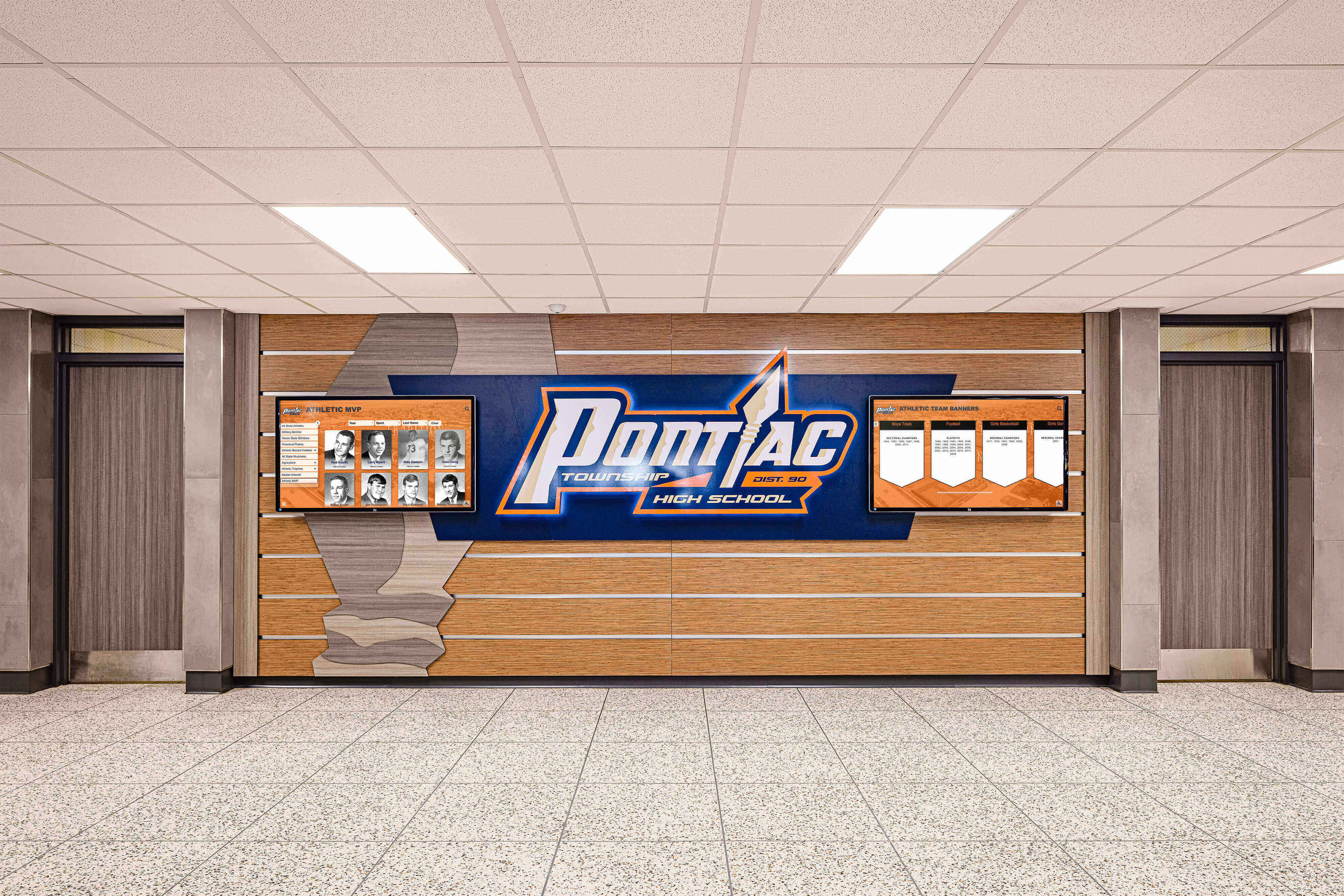
Maintaining Content Currency
Digital displays require fresh content remaining current and engaging. Establish predictable update schedules that become operational routine: immediately following induction ceremonies adding new inductees, quarterly enhancements rotating featured content and adding supplemental materials, annual updates incorporating current season results and alumni accomplishments, and periodic historical expansion systematically extending recognition further into program history. Regular updates maintain audience interest and demonstrate that hall of fame programs remain active and valued rather than static historical artifacts.
Measuring Program Success
Track both quantitative and qualitative metrics demonstrating hall of fame value: display engagement analytics showing interaction frequency and duration, ceremony attendance trends across years, nomination quantities indicating community participation levels, selection process efficiency and timeline adherence, alumni engagement measures correlating recognition with involvement, recruitment feedback from prospective athletes and families, community sentiment through surveys and informal feedback, and fundraising contributions specifically supporting hall of fame programs. Regular assessment enables continuous improvement while generating data justifying continued institutional investment.
Addressing Common Challenges
Managing Controversial Candidates: Occasionally qualified candidates present complications due to post-graduation legal issues, controversy involving personal conduct, conflicting community opinions about character, concerns about celebrating individuals with problematic histories. Clear policies addressing these situations prevent case-by-case debates: specify disqualifying circumstances in written criteria, establish committee review processes for questionable candidates, consider waiting periods allowing passage of time and perspective, weigh post-graduation conduct against high school achievements, and maintain confidentiality around sensitive deliberations. No perfect answers exist, but transparent processes applied consistently build credibility.
Balancing Historical and Contemporary Recognition: Programs must honor both legendary figures from decades past and outstanding recent athletes. Establish induction class composition guidelines ensuring representation across eras—perhaps requiring certain percentages from specific time periods or rotating emphasis. This balance prevents halls of fame from becoming contemporary-only recognition that ignores program foundations or historical-only celebration disconnected from current athletes.
Sustaining Volunteer Energy: Initial enthusiasm for new programs often exceeds sustainable long-term commitment levels. Design operational requirements matching realistic volunteer availability rather than depending on extraordinary effort levels possible only initially. Build redundancy through committee structures preventing single-person dependencies. Celebrate volunteer contributions publicly, acknowledging that program success reflects their dedication. Consider modest compensation or stipends for time-intensive roles when budgets allow.
Integrating Football Halls of Fame with Broader Recognition Programs
Football halls of fame rarely exist in isolation. Thoughtful integration with other recognition initiatives creates comprehensive celebration of athletic achievement while maximizing resource efficiency and institutional impact.
Multi-Sport Recognition Coordination
Schools honoring excellence across multiple sports should establish consistent recognition standards and processes. Unified criteria frameworks adapted for sport-specific needs, shared selection calendar preventing simultaneous induction ceremonies, coordinated induction events recognizing multiple sports together or rotating sport-specific focus, integrated digital displays presenting comprehensive athletic recognition, and consistent branding and visual identity across sport programs create coherence while celebrating each sport’s unique character appropriately.
Best practices for school halls of fame provide frameworks for comprehensive athletic recognition programs honoring achievements across all sports rather than football-only focus.
Connection to Athletic Records and Achievements
Halls of fame complement but differ from athletic record boards and achievement recognition. While football record boards document specific performance statistics updated annually as records fall, halls of fame celebrate complete careers and lasting impact transcending single-season performances. Integration opportunities include linking record holders to hall of fame profiles when appropriate, featuring record-breaking achievements within inductee profiles, displaying record progressions showing historical performance evolution, and recognizing that record holders often (but not always) merit hall of fame induction.
Academic and Character Recognition Integration
Comprehensive student-athlete celebration acknowledges excellence beyond athletics. Consider integrating academic achievement recognition alongside hall of fame displays, character and leadership awards honoring student-athlete citizenship, college commitment celebrations recognizing recruiting success, and community service awards acknowledging civic engagement. This holistic approach communicates that programs value complete development rather than athletic performance alone—a message resonating strongly with families and community members.
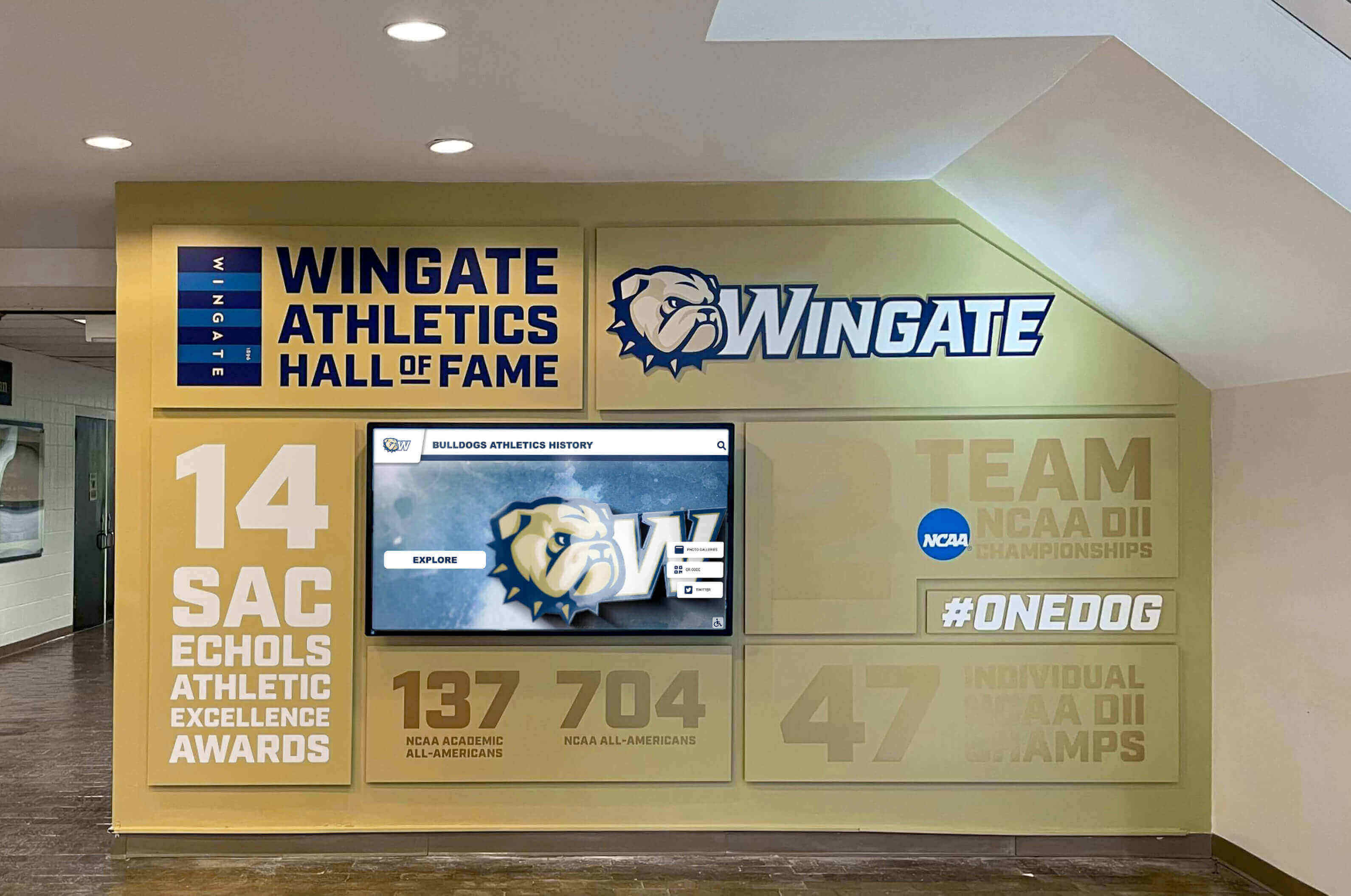
Alumni Relations and Development Integration
Halls of fame provide natural connection points for advancement efforts. Coordinate hall of fame programs with alumni association activities through reunion event integration, giving campaigns highlighting recognition naming opportunities, annual giving programs emphasizing hall of fame support, major gift solicitation positioning recognition as legacy creation, and volunteer recruitment engaging alumni in program operations. This coordination amplifies hall of fame impact while supporting broader institutional advancement objectives. Resources on alumni engagement through digital recognition demonstrate how recognition programs drive sustained alumni connection and support.
The Future of Football High School Halls of Fame
Hall of fame programs continue evolving as technology advances and community expectations change. Understanding emerging trends helps schools design recognition programs remaining relevant and impactful for decades.
Technological Innovations
Artificial Intelligence Applications: AI will increasingly assist with content management and personalization through automated content generation from statistical databases, intelligent content recommendations based on visitor behavior, natural language search enabling conversational queries, video analysis automatically identifying and tagging play footage, and pattern recognition suggesting content gaps or update priorities.
Enhanced Mobile Integration: Mobile access to hall of fame content will expand through progressive web apps providing smartphone access, augmented reality features overlaying information at physical locations, push notifications about new inductees or content, personal achievement portfolios for individual athletes, and QR codes at physical locations linking to expanded digital content.
Virtual and Augmented Reality: Emerging technologies may enable virtual stadium experiences recreating historic games, augmented reality displays showing play diagrams and statistics, immersive “walk through history” timeline experiences, 3D model displays of trophies and memorabilia, and gamified exploration encouraging discovery and learning. While currently expensive, these capabilities will become increasingly accessible as technology matures.
Evolving Recognition Models
Lifetime Achievement Updates: Digital platforms enable ongoing updates about inductees’ post-graduation lives and careers—professional accomplishments and success, community contributions and civic leadership, family information when inductees wish to share, milestone anniversaries (25, 50 years since graduation), and memorial tributes when inductees pass away. This evolution transforms halls of fame from frozen-in-time recognition to living documentation connecting past and present.
Community Storytelling: Future programs may increasingly enable community participation through alumni story submission portals, fan photo and video contributions, oral history interview archives, crowdsourced historical research, and moderated discussion forums sharing memories. Participatory models distribute content development effort while strengthening community ownership and engagement.
Data-Driven Recognition: Advanced analytics will inform program improvement through engagement pattern analysis optimizing content, comparative benchmarking against peer schools, recruitment impact assessment correlating recognition with prospect decisions, alumni giving correlation showing recognition investment returns, and community sentiment tracking through social media analysis. Data-driven approaches will help programs demonstrate value quantitatively while identifying enhancement opportunities.
Conclusion: Honoring Excellence, Inspiring Greatness
Football high school halls of fame serve purposes far exceeding simple athlete recognition. They preserve institutional memory, inspire current athletes, strengthen community bonds, engage alumni, and celebrate values transcending sports—dedication, perseverance, teamwork, and excellence. Well-designed hall of fame programs honor past achievement while creating aspirational targets motivating future generations to add their own chapters to ongoing program legacies.
The evolution from traditional physical plaques to modern digital recognition platforms doesn’t diminish hall of fame significance—it amplifies impact through unlimited capacity, rich storytelling, interactive engagement, and accessibility extending far beyond physical campus locations. Schools implementing thoughtful recognition programs combining clear selection criteria, memorable induction ceremonies, and engaging digital displays create lasting value for their athletic programs and communities.

Whether establishing new recognition programs or modernizing existing halls of fame, success depends on sustainable operational models, committed leadership, quality content development, and ongoing community engagement. Football players who dedicate countless hours to achieving excellence deserve recognition honoring their accomplishments appropriately. Modern hall of fame programs provide that recognition while building program culture supporting sustained excellence across generations.
The athletes currently preparing for Friday night games represent tomorrow’s hall of fame inductees. The recognition programs we build today will determine how effectively we celebrate their achievements and inspire those who follow. By implementing comprehensive, sustainable hall of fame programs leveraging modern technology while honoring timeless traditions, schools create lasting legacies worthy of the exceptional young people they celebrate.
Ready to establish or modernize your football hall of fame program? Solutions like Rocket Alumni Solutions provide comprehensive platforms designed specifically for school athletic recognition, combining intuitive management, engaging experiences, and dedicated support ensuring long-term success in celebrating your program’s unique legacy.




































